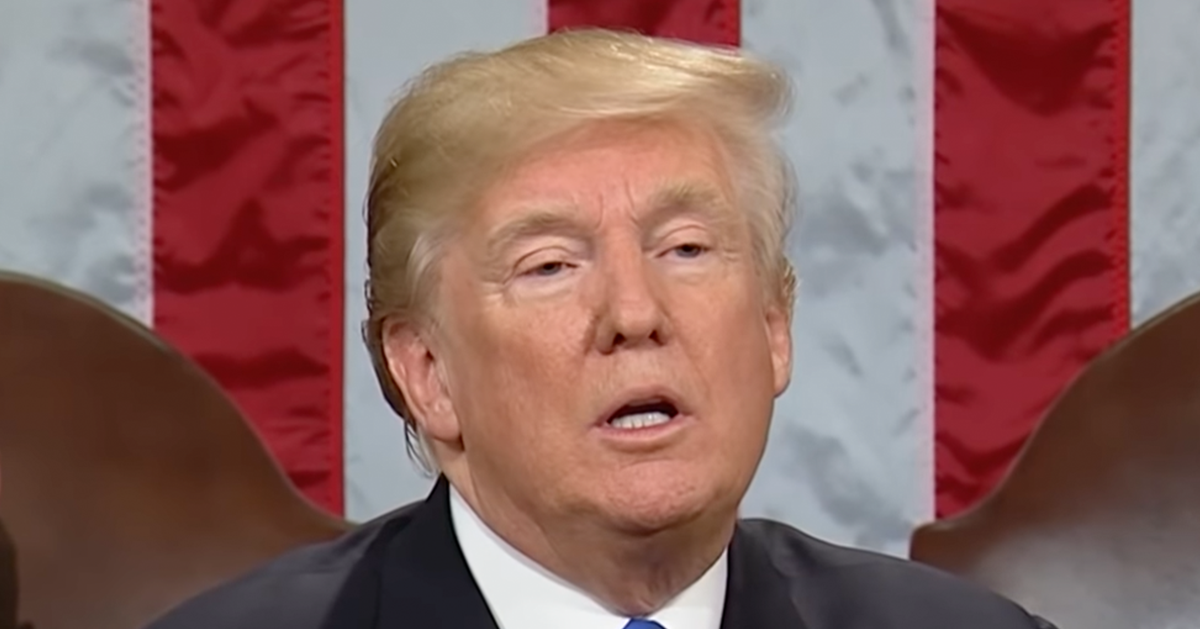Trump Dismisses Gen. Brown From Joint Chiefs Role
President Donald Trump removed Air Force Gen. Charles “CQ” Brown from his position as Chairman of the Joint Chiefs of Staff late Friday.
Gen. Brown, a proponent of diversity initiatives and appointed by former President Joe Biden, was replaced by Lt. Gen. Dan “Razin” Caine, celebrated for his strategic role against ISIS during Trump’s previous term, Breitbart reported.
Trump issued a statement on his social media platform, expressing gratitude for Brown’s extensive service to the nation. He highlighted Brown’s leadership qualities and wished him and his family well for the future. Nonetheless, the decision to replace Brown underscores a new direction under the current administration concerning military leadership.
Shift In Leadership Following Policy Differences
Brown’s tenure, which would have extended to 2027, was characterized by a strong focus on diversity, equity, and inclusion within the Air Force. Notably, Brown released a video discussing the death of George Floyd, highlighting his emotional response to the situation and using it as a clarion call for change. His efforts extended to broadening avenues for the recruitment of minorities into the Air Force.
Despite such initiatives, his term saw controversy. The military dismissed Former Lt. Col. Matthew Lohmeier after he authored a book about the rise of Marxism within the U.S. military, stirring debates about the direction of military education and policy under Brown’s guidance.
Trump's New Direction With Lt. Gen. Caine
Trump’s announcement of Caine as Brown's successor came with a chorus of praise for Caine's achievements and approach to military strategy. Caine was not promoted during Biden’s administration, an oversight noted by Trump. Trump pointed out Caine’s achievements under his first presidency, particularly in the rapid dismantling of the ISIS stronghold.
Trump emphasized Caine’s broad skill set, which includes accomplishments as a pilot and strategist. He noted Caine's “significant interagency and special operations experience,” underscoring the effectiveness he previously demonstrated when combating ISIS.
Trump Emphasizes Military Restructuring
The move to appoint Caine aligns with Trump’s vision to revamp military leadership, focusing efforts on stronger military postures and more decisive action. Trump’s rhetoric reflects an intent to “restore peace through strength” and prioritize American interests prominently.
Beyond replacing Brown, Trump has charged Pete Hegseth with identifying candidates for five other high-profile military positions. This restructuring effort suggests a broader agenda to shape military leadership in line with the administration’s strategy.
Trump's approach marks a shift in military policy, blending past successes with new leadership aimed at rejuvenating military strategies. His comments allude to dissatisfaction with the policies and leadership during the Biden era, priming his administration for swift and decisive action.
An Ongoing Commitment To National Security
As Gen. Brown exits the Joint Chiefs of Staff, both his contributions and his controversial tenure leave a complex legacy. Trump has not minced words in underscoring his support for the military and its continued modernization, bringing military leadership and operational strategy to the forefront under Lt. Gen. Caine.
Caine’s reputation as a “warfighter” hints at the administration’s intent to prioritize traditional military strengths and capabilities. The new chairman must carry forward Trump's vision of enhancing the military's prowess while keeping America's strategic interests in focus.
The military reshuffle portrays a commitment to reinforcing military capabilities while rectifying perceived shortcomings from the previous administration. The balance between honoring service and presenting a new narrative, as shown in Trump’s public remarks, underscores a dynamic shift in military leadership and planning.
Public Reaction And Strategic Implications
As the transition unfolds, the public and military officials alike will be keenly observing how the changes impact military operations and policy. The dual announcement, marking gratitude for Brown’s service while ushering in Caine’s leadership, suggests a delicate transition aimed at fostering continuity alongside change.
The decisions on further military appointments, as charged to Hegseth, serve as a precursor to anticipated adjustments in high-level military strategy. Leaders across the military will likely seek to align with these new directives, providing a potential pivot in the United States' strategic military posture.
In conclusion, Trump's actions offer a glimpse into his administration’s intentions to redefine military leadership and strategy, with a focus on fortifying national security through robust leadership and targeted operational maneuvers. The administration’s focus and priorities will likely influence the broader military framework in significant ways in the coming years.



